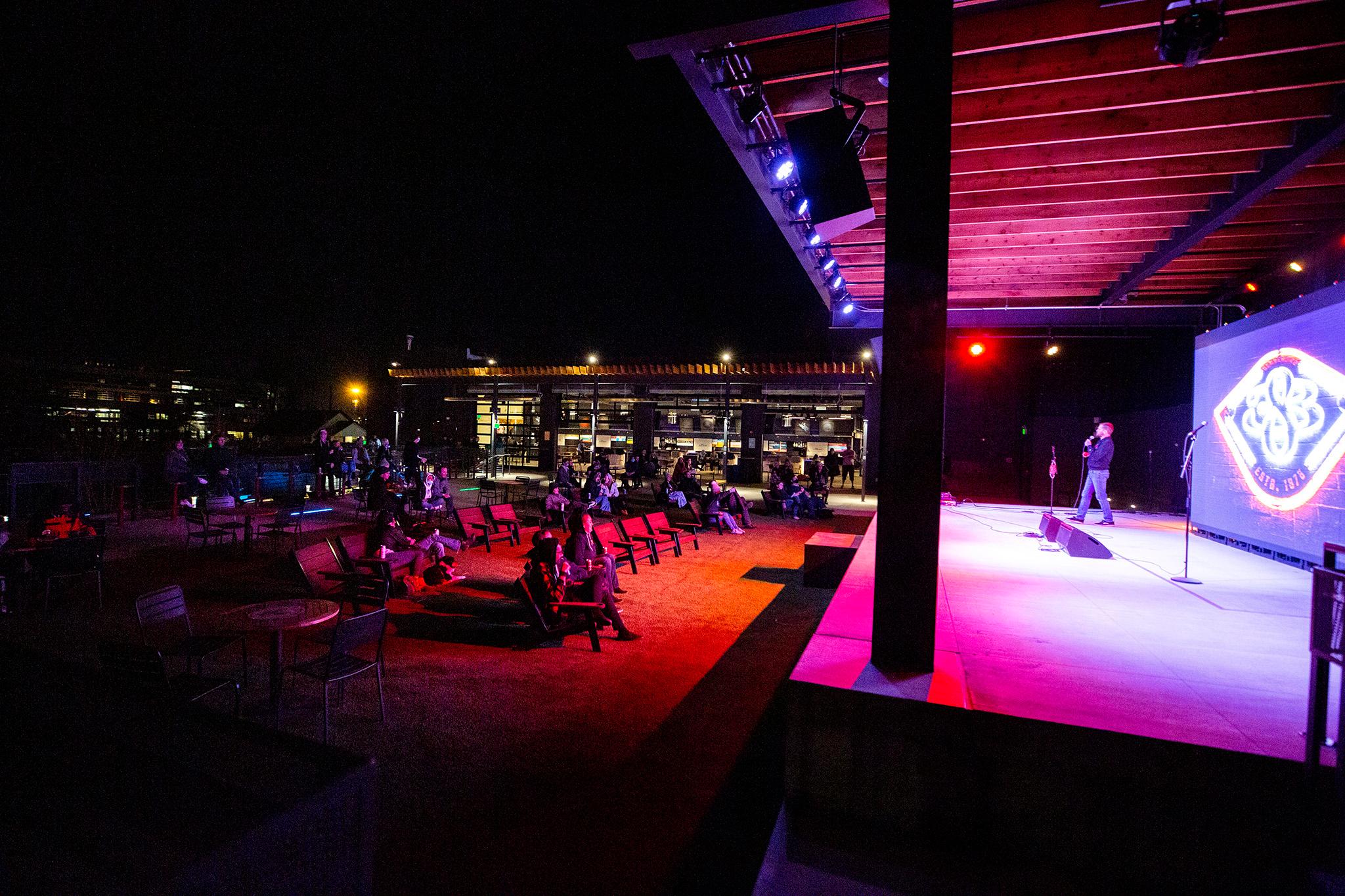If you work in arts, entertainment or recreation in the metro, you're probably back to work.
That's according to the U.S. Bureau of Labor Statistics, which dropped the latest results from its Current Employment Statistics program last week. The agency generates its numbers on filled jobs from a monthly survey.
In June, it estimates, workers in the statistical area encompassing Denver, Aurora and Lakewood filled 26,900 jobs in arts, entertainment and recreation industries. It's the first time since COVID-19 arrived that number rose above February 2020, the Colorado Department of Labor and Employment's (CDLE) benchmark for recovery.
Restaurants jobs are ticking their way back toward pre-pandemic levels, but workers still filled 16 percent fewer positions than they did 18 months ago.
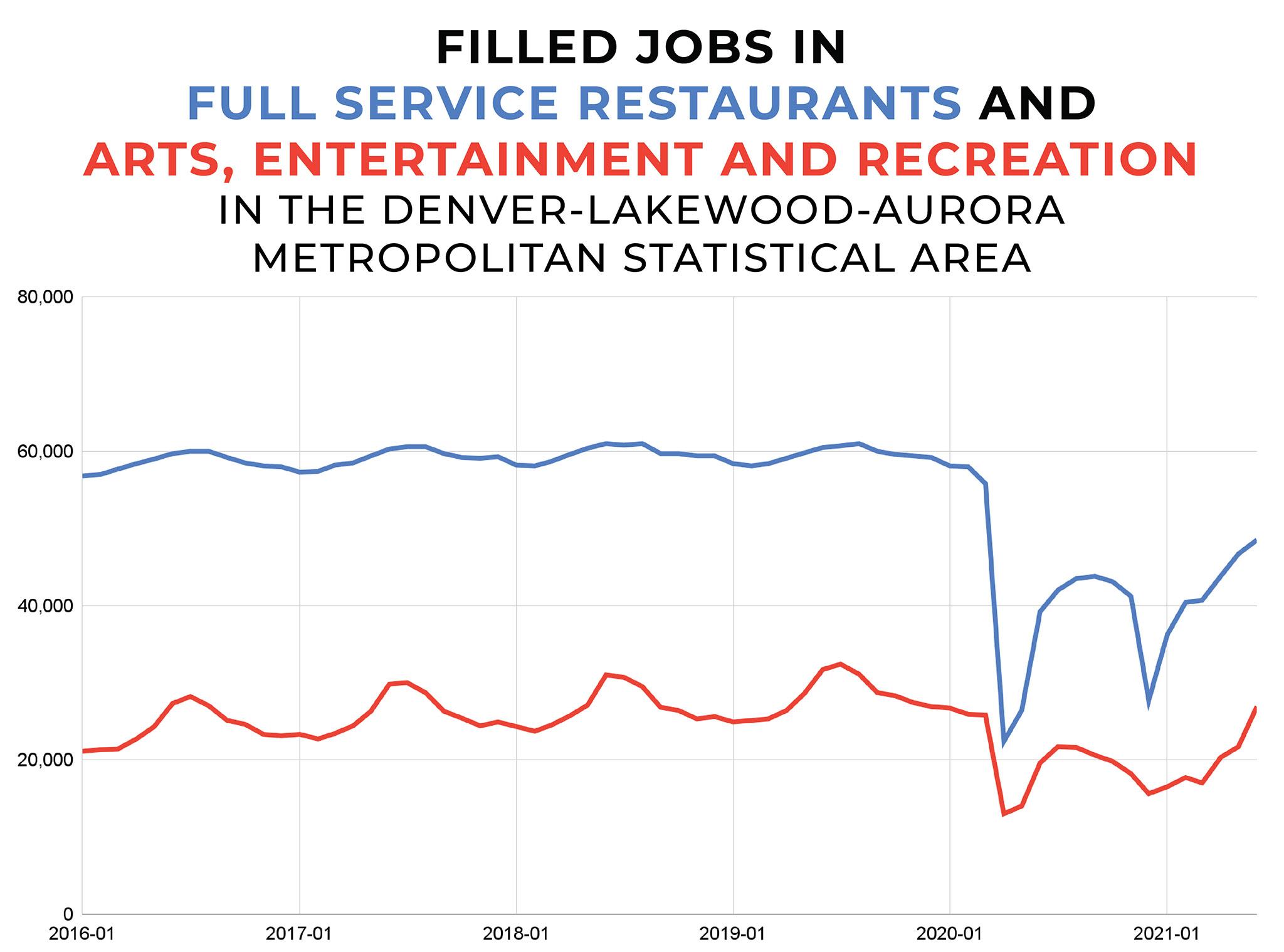
Ryan Gedney, senior economist with the CDLE, said we can use these numbers as a general indicator of industry health in the city. We called him a couple of weeks ago, before June's jobs numbers came out. When we spoke, he said job losses in both restaurants and arts categories in Denver were responsible for the larger trends he's been watching statewide (they both fit under a broader "leisure and hospitality" category).
For one thing, he told us, Denver represents about 55 percent of employment in the state. But the losses in these categories were also massive.
"At the state level, leisure and hospitality employment dropped, in April 2020, down to levels not seen since 1992," he told us.
Improvements here have been nearly as weighty. From January to May, he said, the broader leisure and hospitality category were responsible for 60 percent of all job gains in the state.
"That's a ton, that's an incredible amount," he said.
Here are a few more interesting tidbits from the data drop:
1. Jobs constructing buildings, specifically, took their biggest hit since 2012 during the pandemic. They almost hit February 2020 levels last month, missing the mark by about 300 positions in all.
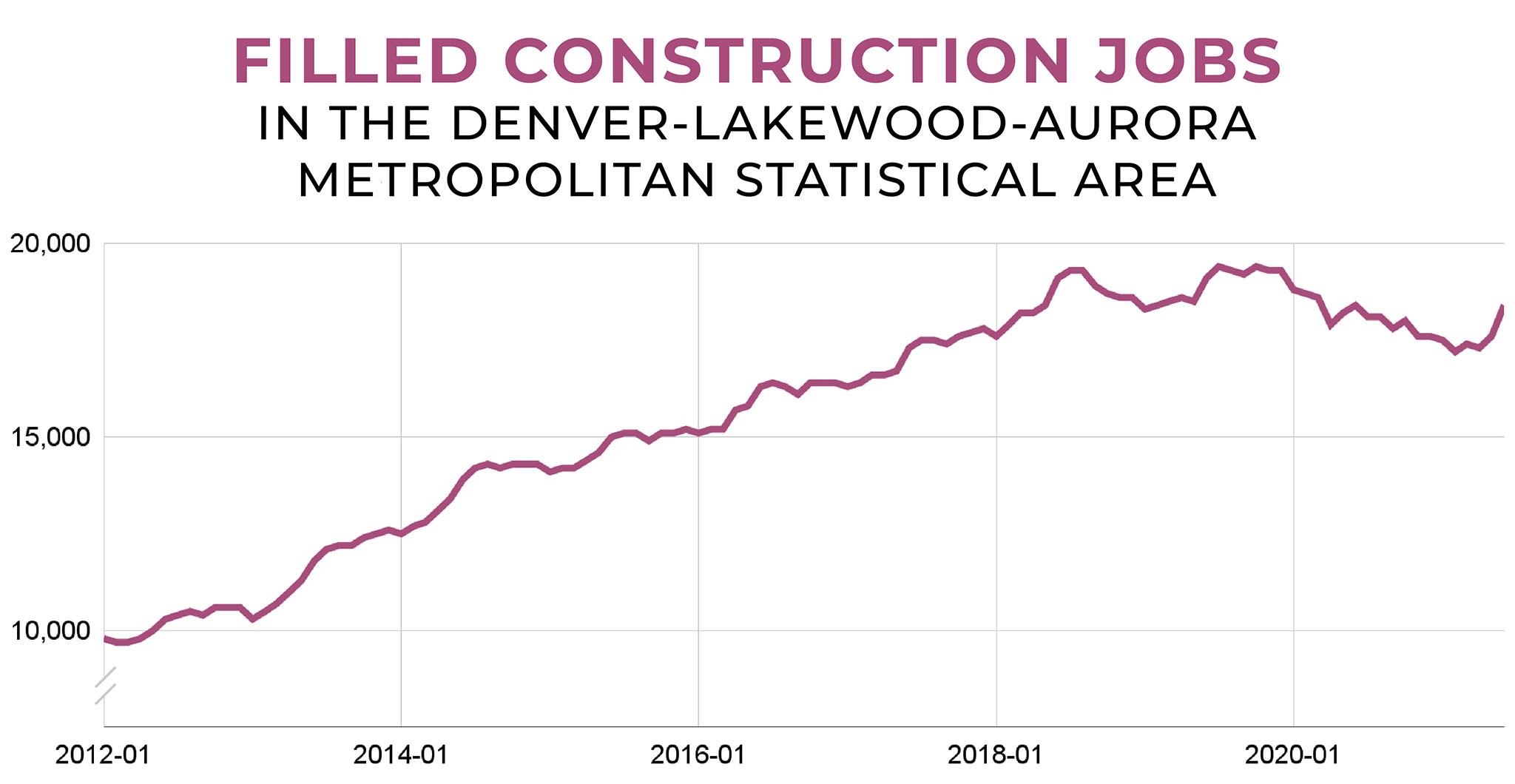
2. Delivery jobs hit an all-time high last year. Gedney said these positions are mostly FexEx and UPS drivers, not necessarily Amazon gig workers, and they usually peak in December during the holiday season. Last year, when we all became very comfortable ordering things instead of going to stores, the number of filled courier and messenger jobs hit an all-time high in the metro.

3. Retail and ambulatory health jobs - which include doctor and dentist offices and other outpatient care - experienced pretty strikingly similar patterns last year. They both dipped during the height of the pandemic, but recovered pretty quickly. Retail jobs made a full recovery, and remained higher than the Feb. 2020 benchmark last month. Ambulance jobs still haven't quite gotten back to their former glory. In June, they still lagged by more than 1,000 filled positions compared to the benchmark.
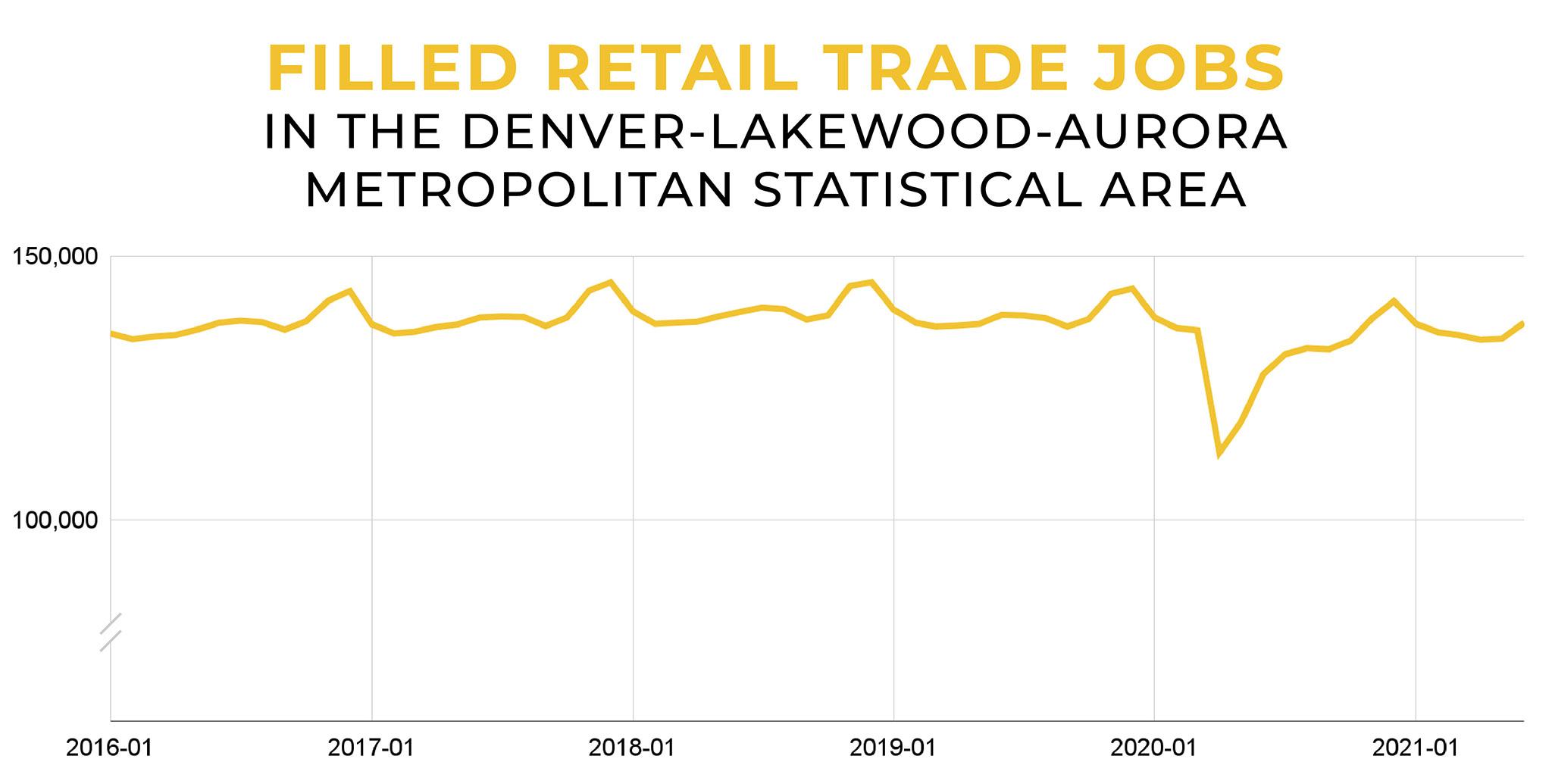
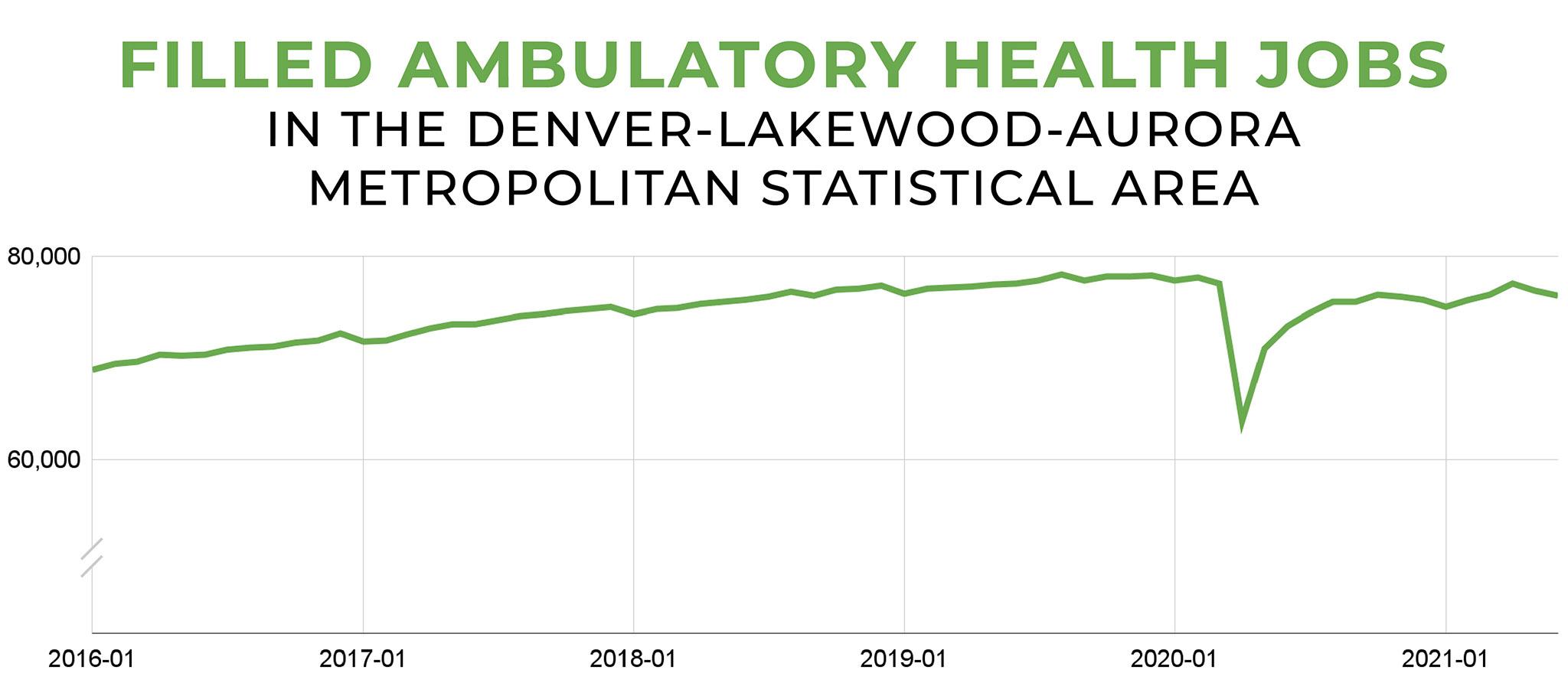
It remains to be seen if actual spending in retail stores have returned to pre-pandemic levels, since sales data lags by a couple of months. Our most recent figures suggest spending in clothing stores, for instance, was still catching up as of April.
Correction: This headline was changed to reflect that arts and entertainment jobs rebounded last month. Also, part of this story was updated to clarify what "ambulatory health services" mean.

